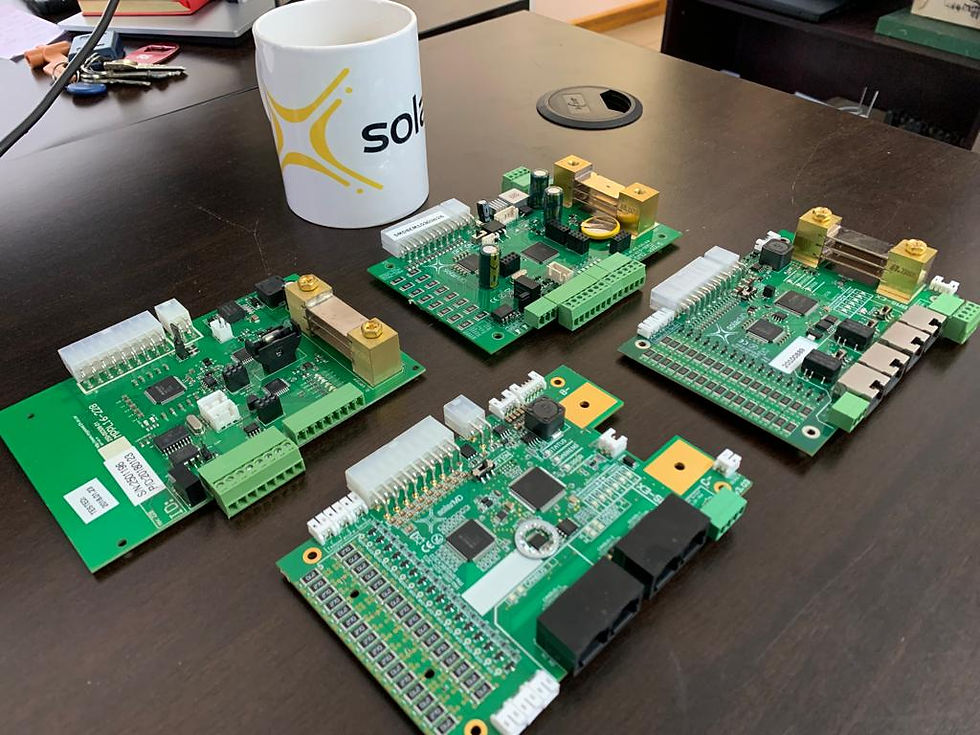Exploring CAN, RS485, and Ethernet: Communication Protocols for Renewable Energy & Storage Systems
- tiaan.botha

- Jun 30, 2023
- 3 min read
Renewable Energy Storage Systems (ESS) are revolutionizing the way we store and manage electrical energy. These systems are becoming increasingly popular due to their high energy density, long cycle life, and superior safety characteristics. To enable efficient control, monitoring, and integration of LiFePO4 ESS, robust communication protocols are essential. In this article, we delve into three commonly used communication protocols for LiFePO4 ESS: CAN (Controller Area Network), RS485, and Ethernet. We will explore their features, advantages, and use cases in energy storage applications.

CAN (Controller Area Network): CAN is a widely used communication protocol in various industries, including automotive, industrial automation, and energy systems. It is a serial communication protocol designed for reliable, high-speed communication between multiple devices over a single bus. CAN offers the following benefits for LiFePO4 ESS:
Robustness: CAN is known for its robustness and fault-tolerant nature. It uses a differential signaling scheme that allows it to resist noise and interference, making it suitable for harsh industrial environments.
Scalability: CAN supports multi-node networks, allowing easy expansion and integration of additional devices into the system. This scalability is crucial in energy storage systems that may involve multiple battery modules or auxiliary equipment.
Real-time Communication: CAN enables real-time communication with low latency, making it ideal for applications that require precise control and monitoring of LiFePO4 ESS, such as battery management systems (BMS).
Safety: CAN incorporates error detection and fault confinement mechanisms, ensuring the integrity and safety of the communication process.
CAN finds extensive use in LiFePO4 ESS for applications such as BMS, cell balancing, state-of-charge (SOC) estimation, and data logging. It allows seamless integration and communication between various components of the energy storage system.
RS485 is a differential serial communication standard commonly used in industrial applications. It offers long-distance communication and multi-drop capabilities, making it suitable for distributed systems. Key advantages of RS485 in LiFePO4 ESS include:
Long-Distance Communication: RS485 supports communication over long distances (up to several thousand feet) without signal degradation, making it ideal for large-scale energy storage systems.
Multi-Drop Network: RS485 allows multiple devices to be connected in a daisy-chain fashion, reducing wiring complexity and enabling cost-effective system expansion.
Noise Immunity: Like CAN, RS485 employs differential signaling, providing good noise immunity and reliability in noisy environments.
Low Power Consumption: RS485 is designed to be energy-efficient, making it suitable for battery-powered devices in energy storage applications.
RS485 is commonly utilized in Renewable Energy Systems for tasks such as communication between battery modules, monitoring of individual cells or groups of cells, and integration with external devices like chargers or inverters.
Ethernet is a ubiquitous communication protocol widely used in computer networks and internet connectivity. It offers high-speed data transmission, scalability, and compatibility with existing network infrastructure. For LiFePO4 ESS, Ethernet brings the following advantages:
High-Speed Data Transfer: Ethernet provides high bandwidth, enabling fast and efficient data exchange between various devices in the system.
Standardization and Compatibility: Ethernet is a well-established standard with widespread adoption, ensuring compatibility with existing networking equipment and protocols.
Remote Access and Monitoring: Ethernet connectivity allows remote access to LiFePO4 ESS, enabling monitoring, control, and data analysis from anywhere in the world.
Integration with IoT: Ethernet facilitates seamless integration with Internet of Things (IoT) platforms, enabling advanced analytics, predictive maintenance, and smart grid integration.
Ethernet is commonly employed in LiFePO4 ESS for tasks such as remote monitoring, cloud-based management, energy management system integration, and grid interaction in advanced energy storage applications.
Effective communication protocols are vital for ensuring the seamless integration and operation of Solar MD LiFePO4 Energy Storage Systems. CAN, RS485, and Ethernet offer unique features and advantages to cater to different requirements in energy storage applications. While CAN excels in real-time control and reliability, RS485 offers long-distance communication and multi-drop capabilities. Ethernet provides high-speed data transfer, compatibility, and remote access. By understanding the strengths of each protocol, system designers can choose the most appropriate communication solution to optimize the performance, efficiency, and scalability of LiFePO4 ESS in various use cases.





Comments